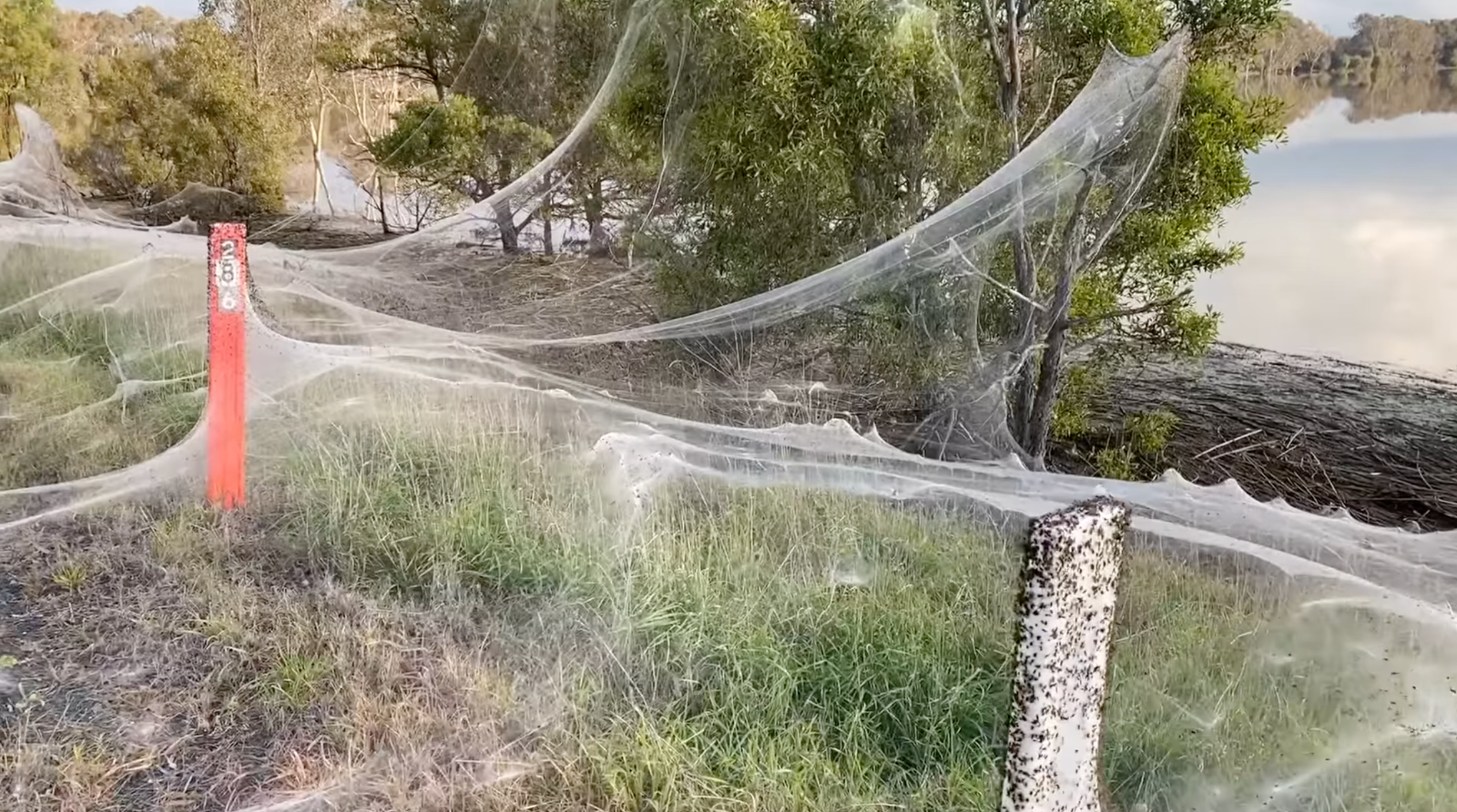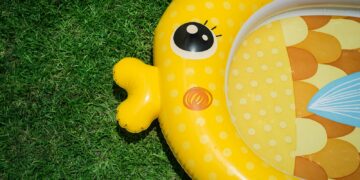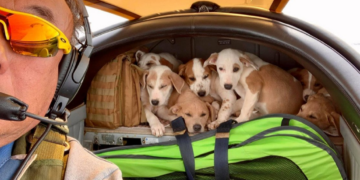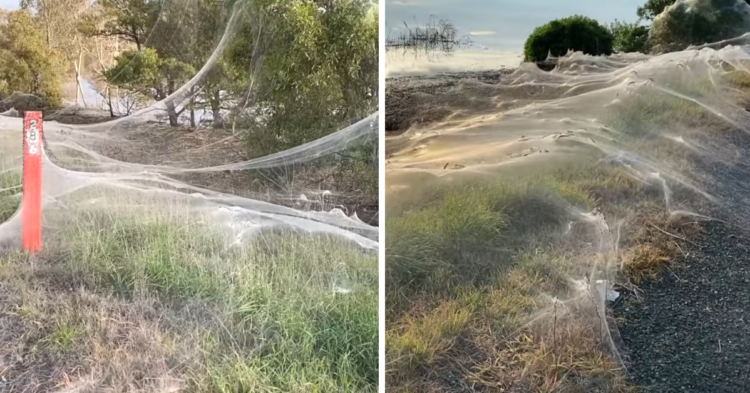In a turn of events that will prove difficult to take in for those who aren’t fans of spiders , residents of Eastern Victoria have recently been inundated with spiders who have been trying their best to cover the land in webbing.
While wild weather conditions have recently been wreaking havoc in Australia , apparently it’s not only humans who have been feeling the effects!
Footage of the spiders’s insanely hard work was captured in the East Gippsland town of Traralgon.

Areas in and around Traralgon have been amongst the most severely affected by recent extreme weather in Australia.
Some of the damage includes the likes of a swathe of flooded roads and paddocks.
It is thought that the flooded roads and paddocks are what have caused the spiders to suddenly seek new homes.

As the spiders try to escape the floods by moving to higher grassland and trees, the result has been the eerie scenes photographed above as thousands of spiders have covered the land in webs.
As the wind blows the spiders’ webs, Jena Beatson, who saw the haunting scenes first hand, explained to The Guardian , “It’s just incredible, when they blow in the winds they look like waves.”
A local expert explained that the number of spiders was actually in the “millions.”

Senior curator of entomology at the Melbourne Museum, Dr Ken Walker, explained that while it appears like there are thousands of spiders, there are actually millions.
“It’s a semi-regular occurrence in Victoria in wintertime when we get most of our rain. Spiders can make a wide range of different silks and one of the silks they use for this behaviour – ballooning – it’s a very, very thin little silk that they use […] to fly away with the breeze. They could fly 100km […] [Here,] they’re using the ballooning not to escape for hundreds of kilometres but to almost throw up a lasso on top of the vegetation,” Dr Walker told The Guardian .
Locals have been assured that the spiders causing the “ballooning” are largely not dangerous to humans.

Although, I’m sure that there will be plenty of arachnophobic people to whom that information is no comfort.
“It’s not dangerous at all. Most of these spiders, their fangs are probably too short to penetrate the human skin,” Dr Walker reassured the locals.
One of the main spider species involved in the “ballooning” is the Ambicodamus species, a red and black spider which is not dangerous, although its bite can cause mild irritation.
There are some who have been embracing the new, eight-legged rulers of the area!
It is sadly unlikely that the webs will remain in place until halloween, as they’re incredibly thin and will be dispersed soon by the wind according to reports.
And, while they may not be setting out to trap humans in their web, the spiders have caused quite a stir — with Ms Beatson explaining, “It’s actually not a great drive at the moment, because everybody’s stopping and pulling over the side of the road to take photos.”
The millions of spiders may be tempted to replicate their spooky show for halloween, but I am sure that a lot of the locals will also be glad when the oddly terrifying spectacle is over!
h/t: Guardian
















































